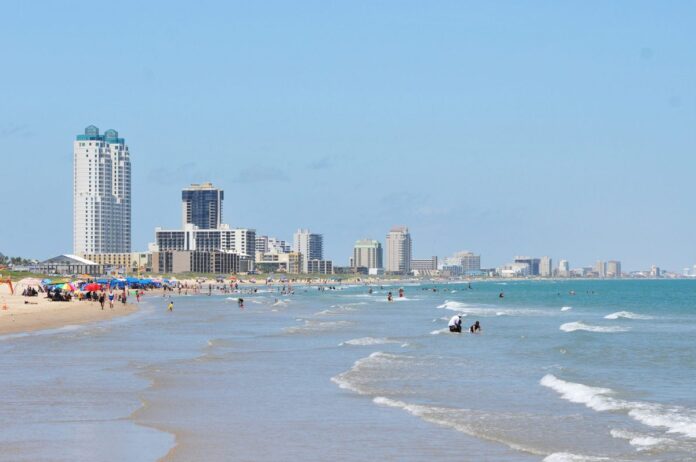SOUTH PADRE ISLAND — Throughout the year, many organizations, including the Keep SPI Beautiful Committee, ask for volunteers to walk the beaches and pick up trash along the way.
But holding a beach cleanup on the Fourth of July in the middle of the day is a new endeavor.
“This is truly an experiment,” said Mary Tannenbaum, a member of KSPIB.
It’s one she is not sure will work. However, she hopes the captive audience following the island’s Independence Day parade Monday morning will bring some folks out to help and maybe learn something in the process.
“It can’t hurt,” she said. “Any trash taken off the beach is good.”
She urged anyone to come out and help, if only for a few minutes.
“If people come and help for half an hour, a lot of beach cleanup can happen in that time,” she said.
Volunteers can sign in at the Daydream Beach Access No. 12 near the Palms Resort, following the parade. Start time of the beach cleanup is expected to be around noon, but could change depending on the length of the parade.
Trash bags and gloves will be provided.
Tannenbaum walks the beach every day and finds straws, beer cans, water bottles and a lot of cigarette butts.
That is what she expects volunteers to find when they go walking the beach. This cleanup is happening farther south than usual. The other cleanups happen closer to Claytons, where the beach is busy all the time. But, committee members agreed, all areas deserve attention.
The cleanup isn’t only about the physical process of picking up trash. Tannenbaum says it’s about educating people about the importance of disposing their trash properly.
She said the beach is fragile and by leaving trash on the beach, it puts wildlife and plants at risk.
This fits right in with the committee’s mission to educate and engage individuals and businesses to take responsibility for improving the community environment.
Tannenbaum said from what she hears from visitors of SPI, the beaches have been getting cleaner when “you look year-over-year.” The Winter Texans, she said, tell her that it has improved.
“They say it is so much cleaner than it used to be,” Tannenbaum said.
There’s much more work to do, and Tannenbaum hopes KSPIB can reach some people and pick up some trash Monday, to continue that trend.
Keep SPI Beautiful Committee’s mission
The mission of the Keep South Padre Island Beautiful committee is to educate and engage individuals and businesses to take responsibility for improving our community environment. The vision statement is to make South Padre Island a clean, beautiful environment in which to live, work and visit.
The seven-member organization meets the second Thursday of each month at 4 p.m.
Committee goals for Keep SPI Beautiful
Litter prevention
Beautification
Reduce, reuse and recycle
Habitat creation, restoration and preservation
What does plastic do to our oceans?
We assume a few of you have heard about the “Texas-sized plastic island” off California’s coast … but how about the disturbing news of plastic beaches and plastic sand? Plastic is accumulating at an alarming rate in our oceans, wreaking havoc on wildlife, polluting our beaches and entering our food chain. Our addiction to use-and-toss items is one of the major causes of this growing problem.
Did you know?
Plastic bags are among the top two items of debris found most often in coastal cleanups. (Ocean Conservancy)
Plastic bags wrap around living corals, quickly “suffocating” and killing them. (U.S. National Oceanic and Atmospheric Administration)
Plastic pieces outweigh surface zooplankton in the Central North Pacific by a factor of 6 to 1. (Algalita Marine Research Foundation)
Plastic pieces can attract and hold hydrophobic elements like PCB and DDT up to 1 million times background levels. As a result, floating plastic is like a poison pill. (Algalita Marine Research Foundation)
Approximately 500 nautical miles off the California coast sits a growing “plastic island,” a gargantuan patch of floating plastic trash held together by currents stretching across the northern Pacific almost as far as Japan. This “plastic island” is made up of about 7 billion pounds of plastic garbage, and measures about twice the size of Texas.
Each year, enough trash — most of it plastic — floats down the Los Angeles River to fill the Rose Bowl two stories deep. (Los Angeles Times, “Altered Oceans”)
Of 500,000 albatross chicks born each year on Midway Atoll, about 200,000 die of starvation. Adult albatrosses mistake plastic trash for food and end up feeding it to their chicks. (L.A. Times)
On a single day in 2007, nearly 400,000 volunteers around the world picked up more than 6 million pounds of trash. A majority of the items were single-use disposable plastic items, such as plastic bags and Styrofoam containers. (Ocean Conservancy International)
Since water keeps the plastic cool and algae blocks ultraviolet rays, “every little piece of plastic manufactured in the past 50 years that made it into the ocean is still out there somewhere.” (Research Triangle Institute)
Information from reuseit.com




